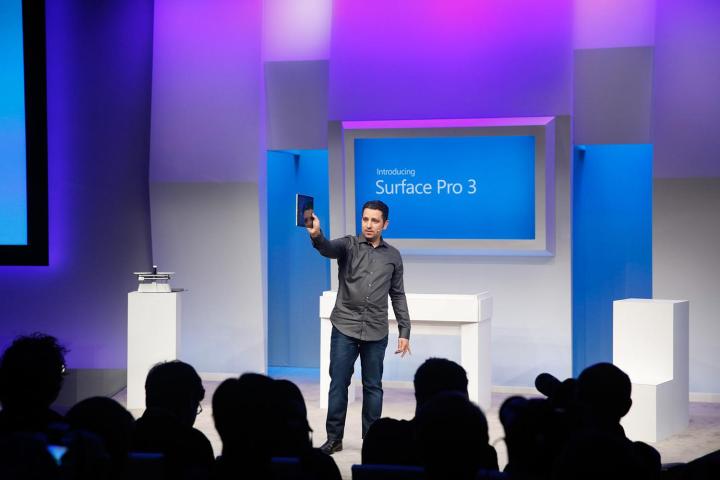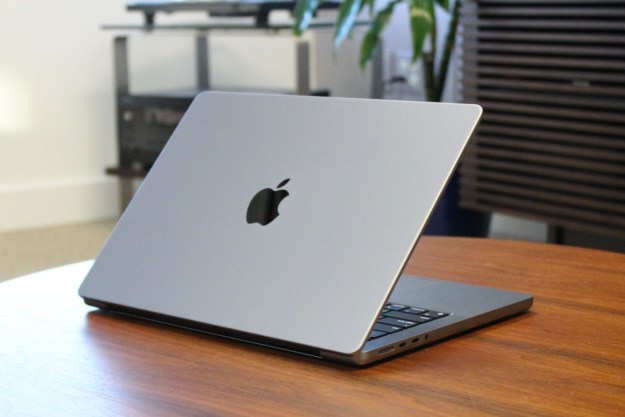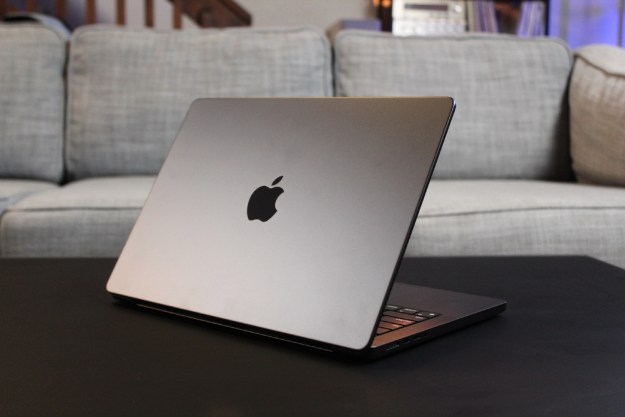
Check out our full written Micosoft Surface Pro 3 review.
The original Surface flopped out of the gate, forcing Microsoft to take a significant inventory write-down. While sales of its sequel are unknown, it’s unlikely to have cleared a million units last year. Hundreds of thousands of units sold may seem impressive, but it’s peanuts next to the iPad, which sold 26 million units in the first quarter of 2014 alone.
Consumers have spoken with their wallets; they don’t want the Surface Pro. Yet, the reveal of the Surface Pro 3 represented a denial of this fact from the very start. Panos Panay, vice president of Microsoft’s Surface division, happily bounded on stage with an inclusive message. The Surface, he said, is built for everyone. But that just isn’t true.
Preaching to the choir
Mr. Panay started his speech with an observation. Despite the popularity of the tablet, which was supposed to change the world, the majority of journalists in the audience were reporting on the event using – well, not a Surface, but a MacBook Air in many cases. What’s more, 96 percent of people who own a tablet already own a laptop. The implication was obvious; why not combine the two?
What weighs the device down is not just the Surface Pro 3 itself, but also the legacy it must carry with it.
You might expect such an inclusive message to be followed with a list of interesting features and refinements that solve the Surface Pro 3’s lack of appeal, which could have included new apps, a better interface, and a lower price. These are traits that truly impact everyone, and areas where the Surface Pro 3 falls short of the competition.
Yet, Panay barely touched on these issues. Instead, he went on to speak about the hardware, the stylus pen, and Microsoft’s cloud services. By the end of the presentation, Mr. Panay was standing on stage, writing notes with the Surface Pro 3’s new stylus. A neat trick, to be sure, and one that may be helpful for the journalists in the room – but what does that have to do with “everyone?”
Giving up on real consumers
The real message delivered by Mr. Panay was much different from what he seemed to push on stage. The Microsoft Surface Pro 3 is not a device for consumers. It’s a device for enterprise – end of story.
What’s unclear is whether Microsoft knows this. Most of the features and improvements available to the Surface Pro 3 – the new stylus, the faster processor, the docking station – matter little to anyone outside of the enterprise market. Yet, Microsoft went to great lengths to act as if the opposite was true. Mr. Panay instead used his presentation to paint the picture of a world where everyone is busy, creative, and always at work.

This is Microsoft’s preferred fantasy of course, because it justifies the need for Windows, Office, and OneNote. A world filled with CEOs, journalists, and graphic designers is a world where the company thrives.
As the iPad has already demonstrated, that’s not the world we live in. The average consumer has no need for a stylus, no need for the full version of Office, and will happily give up Windows as long as the alternative can still access Gmail, Facebook, and Netflix. Most consumers want to know how technology can make their life more convenient, not more productive. Not a single moment of the Surface Pro 3 reveal event spoke to them.
Of course, whether or not Microsoft knows that it’s giving up on the average consumer is irrelevant. Perhaps everyone in Redmond knows, and would rather not admit it. Maybe no one knows at all. Either way, the result is the same.
A reality distortion field
“The definition of insanity,” the saying goes, “is trying the same thing and expecting different results.” If you subscribe to this wisdom, it’s clear that the company has lost its mind. Even if you don’t, the new Surface Pro 3 looks like a non-starter.
What weighs the device down is not just the Surface Pro 3 itself, but also the legacy it must carry with it. Rather than designing a device from the ground up – including hardware and software – Microsoft developed a tablet and threw the desktop version of Windows on it. It didn’t sell well before, and it still won’t sell now. Yet, Microsoft has no alternative, because it never developed a viable alternative (the keyword being viable; Windows RT doesn’t count).
Windows’ legacy is so heavy, that it has created its own reality distortion field. Microsoft literally can’t afford to acknowledge that most people don’t care much about productivity, that its key operating system is a poor fit for its own tablet, and that Windows itself is slowly being replaced by more affordable alternatives.
Unlike the famous distortion field that was projected by Steve Jobs, the one that plagues Microsoft is also a black hole. It sucks ideas inward, yet emits no insight. The quality of the Surface Pro 3 is irrelevant, because it can’t escape the gravity of Windows and Office, a dense core so valued by the company, that it’s more willing to re-imagine society than introduce innovative products.
But no one is buying Microsoft’s vision – and by, extension, the Surface Pro 3.
Editors' Recommendations
- Why you should buy a MacBook Pro instead of a MacBook Air
- This might be why AMD’s FSR 3 isn’t picking up momentum
- The Surface Pro could finally live up to its potential this year
- I’m a VR enthusiast. Here’s why the Vision Pro doesn’t excite me
- Why the future of the Quest depends on the Vision Pro


